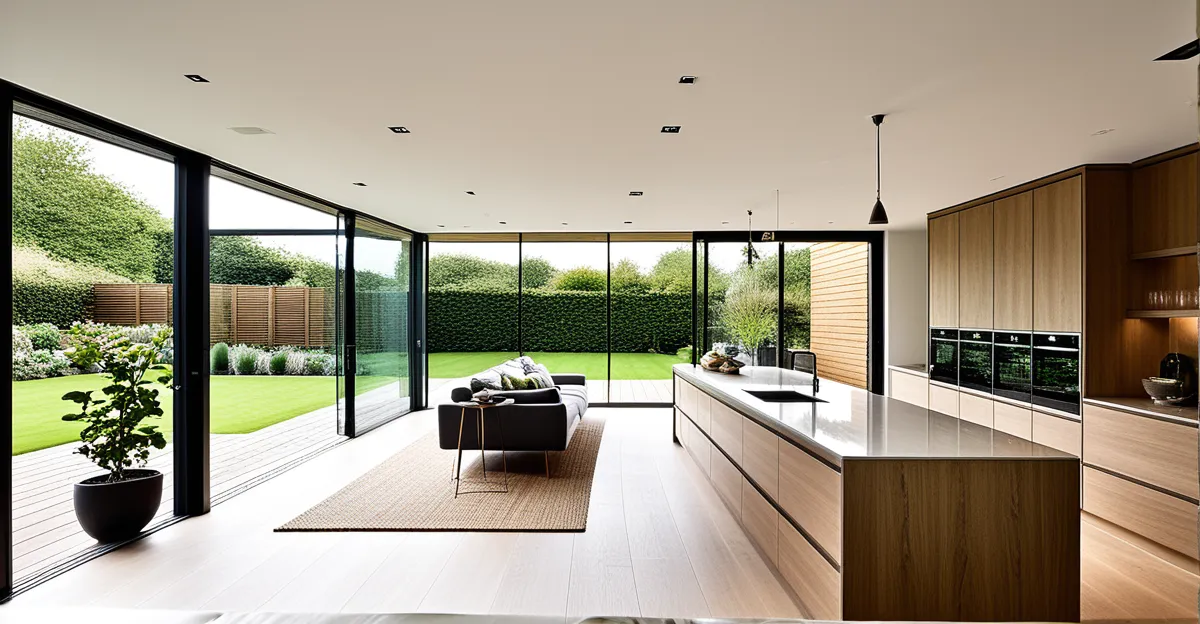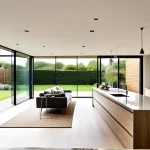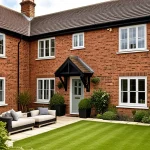Major Influences Shaping Contemporary UK Home Design
Contemporary UK home design trends are profoundly shaped by a blend of minimalism, mid-century modern, and biophilic design principles. Minimalism emphasizes clean lines and uncluttered spaces, reflecting a desire for simplicity and calm. Mid-century modern adds warmth and nostalgia with its functional yet stylish furniture and geometric forms. Biophilic design introduces natural elements like plants and organic materials, promoting wellbeing and a connection to nature within interiors.
Cultural shifts and evolving lifestyles significantly impact modern British interiors. For instance, the rise of remote work has driven demand for practical, comfortable spaces that balance work and relaxation. Sustainability awareness also influences architectural styles, encouraging the use of eco-friendly materials and energy-efficient layouts.
This might interest you : What are the key elements of a traditional UK home design?
Recent design events across the UK have further highlighted these trends. Industry experts consistently emphasize flexible spaces that accommodate changing household needs. Mixed-use environments and subtle blends of vintage and contemporary elements express both tradition and innovation in current architectural styles.
Together, these influences create a vibrant tapestry that defines today’s current architectural styles in the UK, combining function, aesthetics, and environmental consciousness in home design.
In parallel : How Can Small Changes in Interior Design Enhance Your Home Living Experience?
Trending Materials, Colours, and Fabric Choices
Contemporary UK home interiors prominently feature a palette that balances earth tones, bold accents, and subtle natural hues. These trending colors create warmth while allowing flexibility for personalization. For instance, warm terracotta combined with muted greens reflects a biophilic influence, linking indoors to nature. Meanwhile, pops of deep blue or vibrant ochre add dynamic character to otherwise neutral rooms.
Modern materials play a crucial role in defining the texture and feel of UK home design trends. Wood remains a staple for its timeless appeal and versatility, often paired with terrazzo and stone surfaces that introduce artisanal uniqueness. Metals such as brass and matte black finishes provide sleek contrast, enhancing the clean lines championed by minimalism and mid-century modern elements.
Sustainability increasingly shapes fabric choices, with soft furnishings crafted from recycled and eco-friendly textiles gaining favor. Sustainable fabrics like organic cotton, linen, and innovative recycled polyester blends not only reduce environmental impact but offer durability and comfort. This approach supports a growing demand within modern British interiors for responsible design that aligns with ecological values while maintaining aesthetic appeal.
Innovative Layouts and Functional Spaces
Modern UK homes increasingly embrace open-plan living to create spacious, versatile interiors. This layout supports fluid movement between kitchen, dining, and lounge areas, promoting social interaction and maximizing natural light. Open-plan spaces cater well to contemporary lifestyles, where flexibility is prized.
Multifunctional spaces are central to adapting homes for changing needs, especially as many balance work and relaxation under one roof. Rooms easily transition from work zones to leisure areas, often using fold-away desks or movable partitions. Such adaptability is crucial in smaller urban homes, where every square meter counts.
Smart storage solutions address limited space by integrating discreet cabinets, built-ins, and under-stair units. These reduce clutter while maintaining sleek aesthetics favored in modern UK homes. Creative storage transforms awkward corners into efficient, functional areas without sacrificing style.
Design elements supporting work-from-home lifestyles include ergonomic furniture and dedicated nooks that enhance productivity while blending seamlessly with overall decor. This approach ensures homes remain comfortable and efficient, matching the evolving demands of contemporary British interiors.
Furniture and Decor Styles Gaining Popularity
Contemporary furniture in modern British interiors is evolving toward bold statement pieces that serve as focal points, merging aesthetics with function. These pieces often blend vintage charm with artisanal craftsmanship, reflecting a growing UK decor trend valuing uniqueness and personal expression.
Comfort-driven choices take precedence, combining ergonomic design with style. For example, lounge chairs with supportive curves and sofas crafted from sustainable, plush fabrics meet both wellbeing and visual appeal demands. This ergonomic focus caters to evolving lifestyles where relaxation and health are key.
Mixing designer items with carefully sourced vintage and handcrafted accents creates dynamic, textured spaces. Accessories like geometric lamps, abstract art, or handcrafted ceramics introduce character without overwhelming simplicity favored in UK home design trends. This balance resonates with homeowners seeking authenticity and refinement.
Designers emphasize flexibility, offering modular furniture suited to multifunctional rooms, addressing space constraints typical in urban settings. This approach aligns with current architectural styles prioritizing adaptability and individuality. Ultimately, furniture and decor styles in UK homes today celebrate distinctive, comfortable living environments shaped by diverse design influences and practical innovation.
Sustainability and Eco-Conscious Living
Sustainability in home design UK has become a defining feature of green interiors, reflecting both environmental responsibility and modern tastes. Current architectural styles increasingly emphasize eco-friendly materials such as reclaimed wood, bamboo, and recycled metals. These choices reduce the carbon footprint while adding natural textures that complement biophilic influences.
Homeowners and designers prioritize energy-efficient fixtures, including LED lighting, smart thermostats, and water-saving appliances. Incorporating renewable energy sources like solar panels is also common in new builds and renovations, aligning with growing awareness of long-term sustainability benefits.
Demand for low-waste, long-lasting design solutions continues to rise. Durable materials that age gracefully and can be repaired rather than replaced support this trend. For example, sustainably sourced wool and organic cotton textiles combine eco-friendliness with comfort and style.
Experts advocate integrating sustainable principles early in the design process to maximize impact. This strategy not only benefits the environment but also enhances home value and long-term energy savings. Overall, a conscious approach to material selection, energy use, and waste reduction defines a meaningful shift in modern British interiors, merging style with ecological integrity.
Technology and Smart Home Integration
Smart home technology UK is rapidly transforming modern British interiors by merging convenience with cutting-edge innovation. Home automation trends now include intelligent lighting systems that adjust brightness and color temperature throughout the day, creating personalized atmospheres while enhancing energy efficiency. These systems often integrate with voice assistants, allowing effortless control.
Heating solutions also benefit from technology, with smart thermostats learning occupants’ routines to optimize comfort and reduce utility costs. Such devices form a cornerstone of connected living, addressing lifestyle demands for adaptability and sustainability within UK home interiors.
Security technology has evolved beyond traditional alarms to incorporate cameras, motion sensors, and remote alerts via smartphones. Integration of these with other smart systems ensures enhanced safety without disrupting the aesthetic harmony of current architectural styles. This balance between functionality and style is crucial for seamless incorporation into diverse interiors.
Future-forward features, including automated blinds, smart kitchens, and whole-home connectivity, demonstrate a clear trajectory toward more responsive living environments. Expert insights highlight the increasing importance of designing homes with technology that complements both minimalist and vintage-inspired concepts common in UK design trends.
In essence, smart home technology UK enhances daily living by providing intelligent, adaptable, and stylish solutions that align perfectly with evolving modern British interiors needs.







